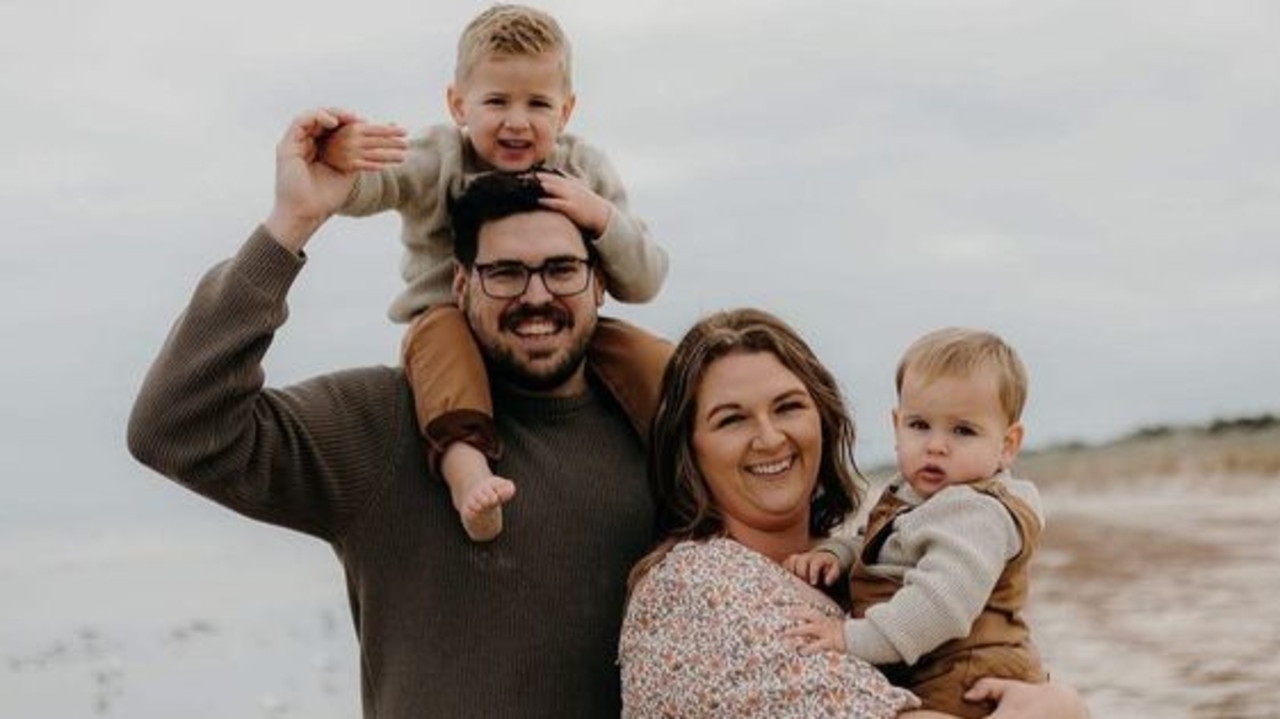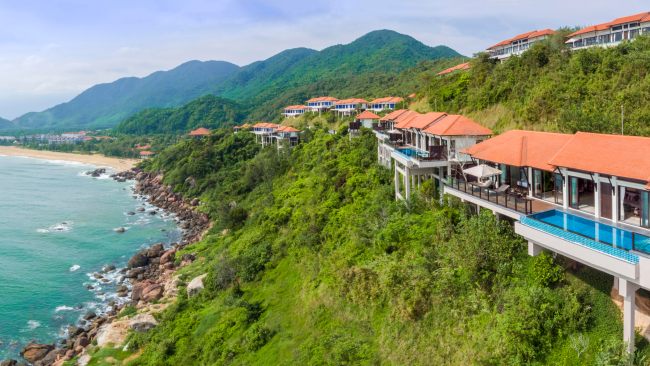I found Australia’s best dark-sky experience
This desert “space camp” is light years from conventional astronomy tours.
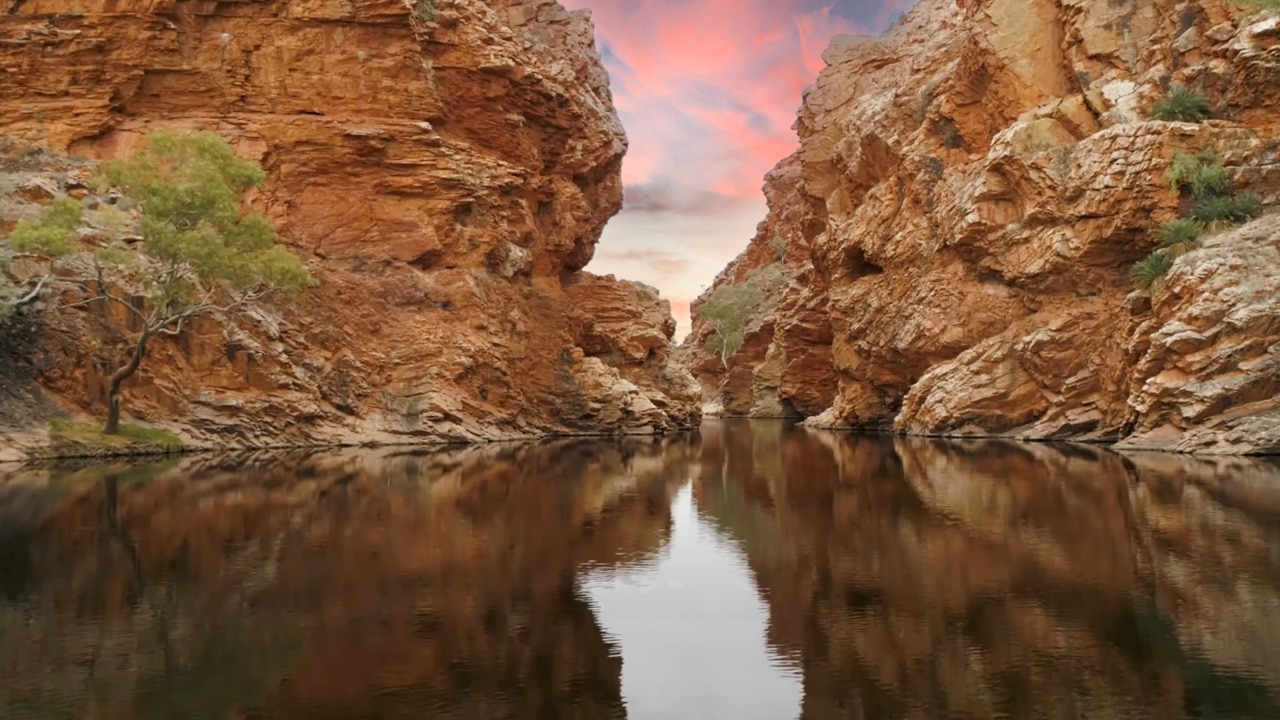
Lifestyle
Don't miss out on the headlines from Lifestyle. Followed categories will be added to My News.
There’s a terminator in our midst. Squinting through a telescope, I see it. The fuzzy line (in non-astro speak) where the dark side of the moon meets the light. Through the eyepiece, the crescent is a jowl of acne scars in the glare of a surgical light, pocked with craters from three billion years of meteor strikes and evoking memories of Arnold Schwarzenegger’s battle-worn cyborg in the hit sci-fi movies.
It’s a mesmerising view, but I’m not especially happy to see it. Rising fast with the sun nipping at its heels, the moon is a cosmic killjoy – snuffing out all but the brightest stars with its bombastic light. What’s more, it’s almost daybreak, and this riveting celestial show – climaxing with the presence of Saturn, Mercury and Mars – is almost over.
Two hours earlier I’d woken in my “star bed” with the cold night air clawing at my exposed face as a snow dome of diamonds blazed across the night sky. It was 4C and the edge of my pillow was damp with dew, but I was toasty, cradled above the Central Australian desert in a heavy-duty swag. I’d done astronomy tours before, but this – camping out under the stars all night with a guide – must surely be Australia’s most (inter)stellar dark-sky experience.
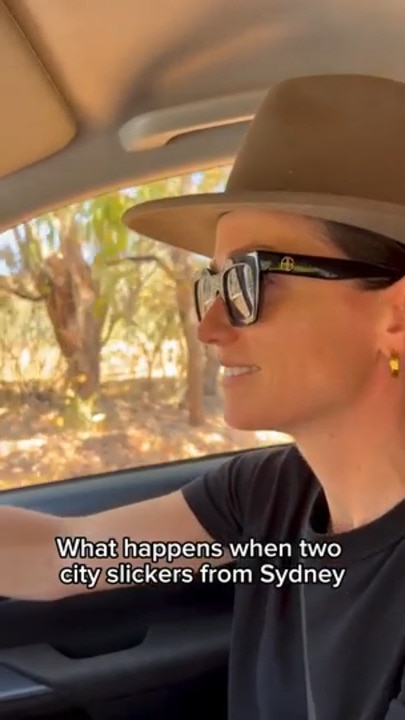
Earth Sanctuary’s Sunset 2 Sunrise experience takes place at a “space camp” just south of Alice Springs, where the Falzon family has carved a business leading astronomy tours and guiding school groups through the outback for 25 years.
The family – Joe Falzon and Roz Lane and adult sons Tom, Ben and Dan (a former Neighbours star) – moved to the Red Centre from Victoria in 1999 on a planet-saving quest. They developed an eco-certified, carbon-neutral program of “nature therapy” experiences designed to rewild guests and inspire sustainable living.
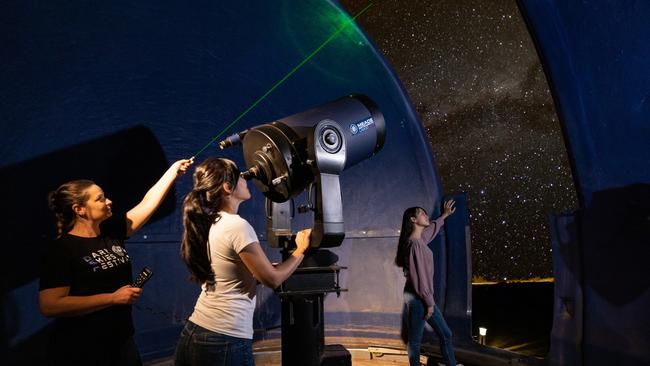
My journey begins with dinner served in the homestead before Tom leads us outside for an introduction to the night sky. Brandishing a powerful laser that would make Star Wars’ hero Luke Skywalker swoon, Tom begins by pointing out the Southern Cross and pointer stars, Alpha Centauri and Beta Centauri. He illustrates how to identify the south celestial pole, explaining how the stars have been used for navigation and storytelling since the beginning of humankind.
“We call the stars above us the original library on Earth. These shapes up there and the stories embedded in them are some of the oldest stories on Earth,” he says. The Spanish and Portuguese explorers dubbed the Southern Cross the “south celestial clock”, noting how it circled across the sky, in parallel with the seasons. First Nations peoples of the Central Desert see the constellation as the footprint of a wedge-tailed eagle and the pointer stars as fire sticks, their billowing smoke creating the Milky Way.
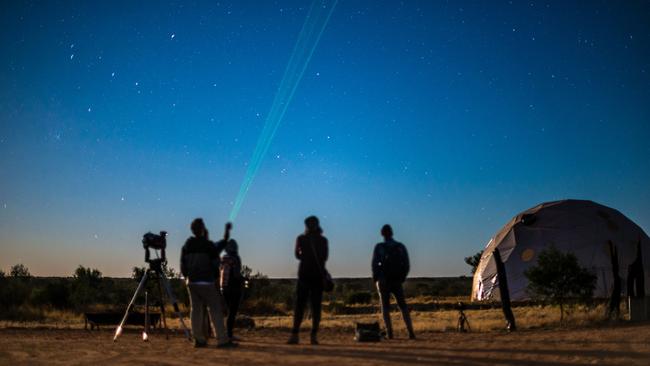
Tom’s laser streaks between the stars, joining the dots in an abstract animation of zodiac signs. There are six present at any one time but, sketched in the northern hemisphere in antiquity, they require some imagination to decipher. We peer through a deep-space telescope at a “jewel box” cluster of stars 6400 light years away, and learn there are 180 billion galaxies in the universe – “20 for every man, woman and child on Earth”. We’re warned some of these cosmic concepts might “spaghettify” our minds, and they do.
When the evening tour groups depart, eight “space campers” remain. “This is black belt astronomy now guys, we’ve done a little warm-up and now we can just sit back and enjoy the galaxy,” Tom beams at us.
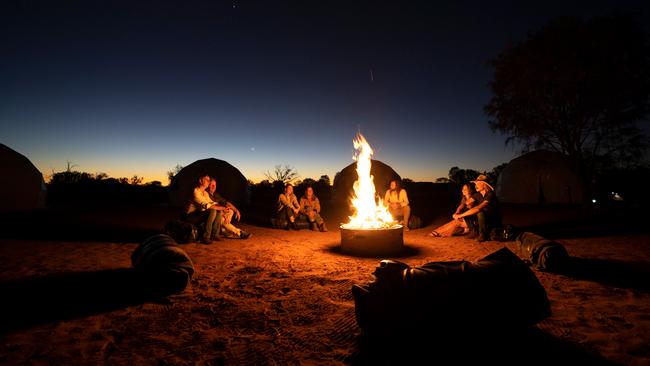
What transpires is a conversation among strangers that can only happen around a campfire after a glass (or two) of wine. A whole new vocabulary pings my boggled mind: nebulas, white dwarfs, Fraunhofer lines, pulsars, Magellanic clouds. We discuss the viability of colonising the moon, mining meteors and how each of us is made of stardust – base elements that originated from supernovas (exploding stars). Inevitably, we disappear down a wormhole contemplating the existential question of life beyond Earth. When the campfire is reduced to embers, it’s time for bed and I wriggle into my swag.
Tom plans to wake us at 2am when Scorpio – the centre of the Milky Way – is at its zenith. But the clouds have other ideas and on we sleep. When I wake a couple of hours before dawn the sky is clear and I lie transfixed, gazing through the slit between my beanie and canvas as the universe pulses above.
We rise just before daybreak. The Southern Cross is setting in the west, the moon is rising in the east, and the telescope sweeps us onto the rings of Saturn. Soon the sun will be up and the curtain will fall on this spectacular sky show.
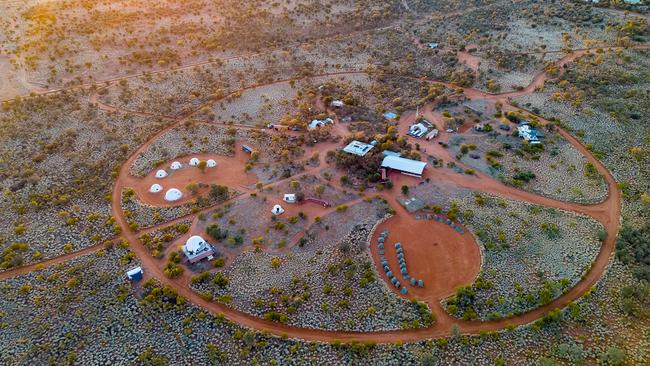
How to get to Earth Sanctuary
Earth Sanctuary is 15 minutes’ drive south of Alice Springs. Direct flights are available from most capital cities.
How much is Earth Sanctuary’s Sunset 2 Sunrise experience?
Sunset 2 Sunrise experiences run between April and September and cost from $676 an adult and $475 for kids aged eight and over. Kids under eight are free.
The writer was a guest of Tourism NT.
Originally published as I found Australia’s best dark-sky experience

